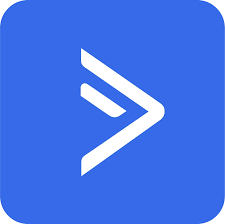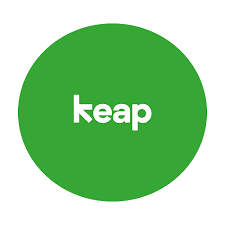Ontraport is a CRM and marketing automation platform for small businesses and memberships management.
Ontraport centralizes contacts, purchases, subscriptions, forms, and campaigns. Connecting Ontraport with PassKit turns those CRM events into wallet passes for Apple Wallet and Google Wallet. Members, customers, and attendees receive a branded pass they can find on their phones, and the same pass can update automatically when status or details change.
With this integration, you can issue, update, or revoke passes whenever Ontraport records key actions such as a new purchase, a subscription renewal, a tag change, or a completed form. This reduces manual work, speeds check-in, and keeps customers informed without extra emails.
Setting Up The Integration

You will link Ontraport events to PassKit so pass creation and updates happen automatically. The steps below outline the process and why each step matters.
- Create and publish your pass project in PassKit. Choose a membership card, coupon, event ticket, or loyalty card layout and include fields such as name, tier, expiry, and a scannable code.
Publishing the project makes it available to your automation immediately. - Collect your PassKit API details. In PassKit, open Settings and then Developer Tools to note your API region, SDK host, API prefix, and to generate credentials.
These details allow secure, authenticated requests from your automation to PassKit. - Choose Ontraport triggers. Common triggers include contact created, tag added or removed, order successful, subscription charged, subscription failed, form submitted, and campaign step reached.
Clear triggers ensure passes are issued and updated at the right moments. - Connect through middleware or API. Use Zapier, Make, webhooks, or a lightweight middleware service to receive Ontraport events and call the PassKit API.
This connection turns Ontraport activity into pass actions without manual steps. - Map fields to your template. Link Ontraport fields such as name, email, contact ID, plan, expiry, and order ID to your pass fields.
Accurate mapping ensures the pass shows the right information from day one.
After these steps, Ontraport will drive pass issuance and updates reliably with no ongoing manual effort.
Common Use Cases
Ontraport and PassKit work well wherever memberships, purchases, or campaigns create a reason to show a credential. The examples below show practical patterns and the outcome you can expect.
- Membership Cards – Issue a wallet card when a contact joins or renews a plan, showing tier, expiry, and a barcode for verification.
Members keep a visible proof of status and staff can scan quickly. - Loyalty Cards – Update points or level when qualifying orders are recorded in Ontraport, using the same pass each time.
Customers see progress without logging into a portal. - Event Tickets – Send a ticket after a form submission or order, including time, venue, and a QR code for entry.
If details change in Ontraport, the ticket updates so attendees see the latest information. - Promotional Offers – Deliver limited-time coupon passes to segments based on tags or campaign goals.
Passes remain in the wallet until expiry, improving redemption compared to email-only codes. - Retention And Recovery – When a subscription fails, change the pass appearance and include a pay link; when it succeeds, restore benefits.
This keeps access aligned with billing and reduces support messages.
These patterns replace PDFs and ad hoc emails with a persistent, up-to-date asset on the customer’s phone.
Industries That Benefit Most
Any organization running Ontraport can benefit, especially those with recurring relationships or event-driven engagement. The list below highlights common fits and why they work well.
- Online membership communities
- Education, coaching, and courses
- Fitness, wellness, and studios
- Events, workshops, and conferences
- Local services and clubs
These groups gain faster verification, clearer communication, and higher repeat engagement using wallet passes.
Requirements
A short checklist helps ensure a predictable setup and fewer changes later. Review the items below before you begin.
- A PassKit account with a published pass project
- An Ontraport account with access to automations, tags, and orders or subscriptions
- PassKit API credentials from Developer Tools
- Zapier, Make, webhooks, or a small middleware service
- A field-mapping plan from Ontraport objects to your PassKit template
With these in place, most teams can launch a dependable integration quickly.
Support & Documentation
Helpful resources for setup and management:
Reviewing these resources before starting will ensure the integration process is efficient and avoids unnecessary issues later.
Frequently Asked Questions
Can Ontraport Trigger Different Pass Designs For Different Customer Segments?
Yes. Use tags, plans, or custom fields in Ontraport to select a PassKit template at issuance. For example, map VIP, Standard, and Trial to different templates, and store the pass ID on the contact so later changes update the correct design.
Will Passes Update Automatically When Ontraport Records Change?
Yes. Set Ontraport automations to fire on events such as order success, subscription renewal, payment failure, tag change, and profile update. Your middleware receives the event, computes only the fields that changed, and calls PassKit Update for the existing pass.
Keep a stable contact identifier and the pass ID on the Ontraport record so every change targets the same pass. Typical updates include extending expiry after a renewal, changing tier labels after a plan upgrade, modifying color or text after a failed payment, and disabling a barcode when access should end.
Add retries for transient errors, use idempotency keys per event, and normalize time zones so the expiry shown on the pass matches the dates stored in Ontraport.






